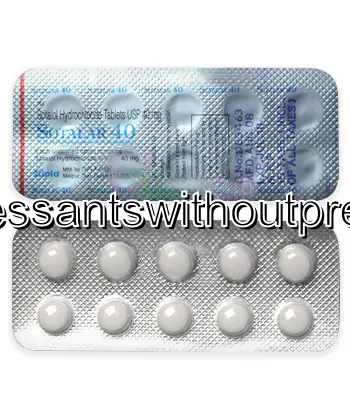Buy Sotalol Online Without Prescription
| Package | Dosage | Price | Price per Dose | |
|---|---|---|---|---|
| Dosage: 40mg | ||||
| 360 pill | 40mg | $574.18 | $1.60 | |
| 180 pill | 40mg | $298.25 | $1.66 | |
| 120 pill | 40mg | $202.55 | $1.69 | |
| 90 pill | 40mg | $159.48 | $1.77 | |
| 60 pill | 40mg | $111.63 | $1.87 | |
| 30 pill | 40mg | $60.59 | $1.99 | |
| 20 pill | 40mg | $43.05 | $2.14 | |

Sotalol Description
Introduction to Sotalol
Sotalol is a medication commonly used to treat heart rhythm disorders, particularly arrhythmias such as atrial fibrillation and ventricular tachycardia. It belongs to a class of drugs known as beta-blockers, but it also has potassium channel-blocking properties. This dual action makes sotalol effective in stabilizing irregular heartbeats, reducing symptoms, and preventing potentially dangerous arrhythmias. It is essential to use this medication under the supervision of a healthcare provider, as it requires careful dosing and monitoring for side effects.
Mechanism of Action
Sotalol works by blocking beta-adrenergic receptors, which are part of the sympathetic nervous system. This action helps decrease the heart rate and the workload on the heart, which can be beneficial for patients with certain arrhythmias. Additionally, sotalol blocks potassium channels involved in cardiac repolarization. This prolongs the action potential duration and the QT interval, helping to prevent abnormal electrical signals in the heart. These combined effects contribute to its ability to suppress abnormal heart rhythms and maintain regular heartbeats.
Benefits and Effectiveness
Many patients find that sotalol effectively manages their arrhythmia symptoms. It can restore normal heart rhythm and reduce the frequency of episodes. Its effectiveness varies depending on the individual and the type of arrhythmia being treated. Sotalol has been shown to decrease hospitalizations due to arrhythmic events and improve overall cardiac stability. However, successful treatment depends on appropriate dosage and close medical oversight, due to potential side effects and the need for regular heart monitoring.
Potential Side Effects
While sotalol can be highly beneficial, it also carries a risk of side effects. Common adverse effects include fatigue, dizziness, and shortness of breath. More serious concerns involve the prolongation of the QT interval, which can lead to a rare but dangerous ventricular arrhythmia called torsades de pointes. Some patients may experience low blood pressure, slower heart rate, or exacerbation of existing heart conditions. It is crucial for patients using sotalol to undergo regular electrocardiograms and medical evaluations to detect any adverse reactions early.
Precautions and Warnings
Sotalol should be used with caution in patients with pre-existing conditions like bradycardia, asthma, or other respiratory issues. It is not suitable for people with certain heart blocks unless they have a pacemaker. Patients should inform their healthcare provider about all medications they are taking to avoid interactions that could increase side effects or diminish the effectiveness. Pregnant or breastfeeding women should discuss the risks and benefits with their doctor before starting treatment. Regular monitoring helps ensure the medication remains safe and effective during therapy.
Usage and Dosage
The dosage of sotalol varies depending on the patient's condition, age, and response to treatment. It is typically prescribed to be taken orally, often once or twice daily. Patients should follow their healthcare provider’s instructions carefully and not adjust doses without medical advice. It is important to take the medication at consistent times and to adhere to scheduled check-ups to monitor cardiac health. Missing doses can increase the risk of arrhythmia recurrence, so patients are advised to maintain regular medication schedules.
Conclusion
Sotalol remains a vital option in the management of certain arrhythmias, thanks to its dual mechanism of action. Its ability to restore and maintain normal heart rhythm can significantly improve quality of life for many patients. Nevertheless, due to the potential for serious side effects, it requires careful medical supervision. Patients should always communicate openly with their healthcare providers and report any unusual symptoms during therapy. When used correctly, sotalol can be a safe and effective part of comprehensive heart rhythm management.
